Economy Minister Luis Caputo will need at least US$8.5 billion from the International Monetary Fund (IMF) to create a bridge permitting the Javier Milei government to traverse the months of political and financial jitters before the October midterms.
The figure comes from sources in the know about the negotiations and market estimates centred on a key factor – it matters more how much the IMF is prepared to frontload than the complete programme.
These days there are more doubts than expectations around the sum of fresh funds. The most pessimistic forecasts of the voices with IMF links are in the US$4billion to US$5 billion range for the initial injection of greenbacks.
The most optimistic “guestimate” in the money markets comes from Mauro Mazza, the research chief of Bull Market, the brokers of the Marra family close to the presidency (including City lawmaker Ramiro Marra), who in a report circulating among clients spoke of US$10 billion to US$15 billion for Argentina, but tending towards the top of that range: “They won’t have gone to all that trouble for US$10 billion (we estimate).”
The tug-of-war between the Fund and the economic team is for a sum permitting Caputo to make the least exchange adjustment possible and sustain a sufficiently favourable system to traverse the electoral months (when the financial pressures are usually greatest), without falling behind in debt repayment, with inflation contained and the possibility of market intervention – a tricky point in negotiations with the IMF staff.
The ‘blend’ as a bargaining-chip
Between May and October, the government faces public bonds falling due, the BOPREAL created to resolve commercial debt, along with interest payments to the IMF and other organisms.
The 1816 consultancy firm, one of the market’s most listened to voices, estimates that between May and October at least US$9 billion will be needed to create a “bridge” keeping gross reserves invariable, always assuming that the economy grows at the three to four percent pace estimated by the government and the IMF for 2025.
The calculations of the Peronist think tank place the magic number at US$8.6 billion with the condiment of eliminating “the blend.”
The blend is a differentiated system permitting exporters to cash 80 percent of their dollars at the official exchange rate and the other 20 percent at the CCL (Contado Con Liquidación) financial rate. The Fund had already requested its elimination in mid-2024 but the government ignored them, continuing to benefit from its effects.
On the one hand, it improves the exchange rate, making it more competitive and on the other, maintains a constant flow in the parallel market where the major players operate, manipulating the exchange rate to avoid undesired leaps which are then transferred to prices.
Former government officials in previous negotiations with the IMF have assured Perfil that there is great probability on this occasion of the libertarian administration surrendering the blend as a bargaining-chip for the “free availability” of the funds.
Caputo would thus obtain a tool for intervention at his discretion, a key to maintaining a cheap dollar which extends the shelf life of an inflation to the taste of public opinion, one asset President Milei has (for now) when facing the ballot-boxes.
The dollar debate
Other sources with experience of discussions with the multilateral lender anticipate that, even without the IMF’s blessing to influence parallel exchange rates, the government is preparing remittances from other international organisations to permit intervention.
All the sources consulted by Perfil agree that there will be changes in exchange rate policy and that firepower will depend on them.
Until now the Central Bank has used the official exchange rate as an anchor but the Fund, headed by Kristalina Georgieva, considers the “crawling peg” strategy to be obsolete. The IMF believes it perpetuates an overvalued peso, which discourages exports and the national production of goods and services while encouraging imports if sustained in time.
It is a combination which, in the medium and long term, prevents the country from accumulating reserves to face the commitments of the programme, Fund technicians have concluded.
The IMF wants a freer exchange rate, while the economic team prefers a float between bands with the currency fluctuating between a floor and ceiling without Central Bank presence.
Jorge Vasconcelos, chief economist of the IERAL thinktank, suggests that in a scenario of “administered” float, “after an initial leap, it is possible that the exchange rate finds a perceived equilibrium without need for a major devaluation.”
“Trying to continue through to October with a one percent crawling peg and a frozen money supply would very probably accentuate the phenomenon of rising interest rates which can already be observed at present, both in the futures market (ROFEX) and in the cost of refinancing domestic debt. And this risk cannot be compensated with the injection of fresh funds from the IMF, given the expected sums,” indicated the analyst.
Reserves to 2023 levels
Meanwhile, Argentina’s Central Bank continues back-to-back sales placing the spotlight on the total of reserves necessary to sustain the current exchange rate system (as well as the one emerging from the agreement).
Last Tuesday they dropped a further US$109 million to meet the demand of market dismantling carry trade positions in order to cover themselves in hard currency awaiting an exchange rate leap in the combo of the new programme.
In the previous seven working days the monetary authority had shed over US$1.321 billion, estimated Quantum Finanzas analysts, with its coffers US$10.7 billion in the red, as projected by the Eco Go consultancy firm.
In other words, in one week of a run on the currency, the Central Bank has burned up enough reserves to return to the levels of December 2023, when Milei had just taken office – and the previous government left Argentina with negative reserves of US$10.6 billion.












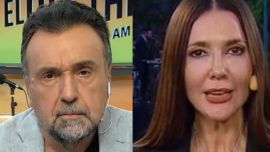



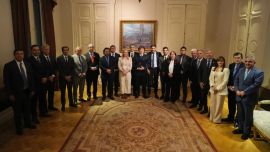
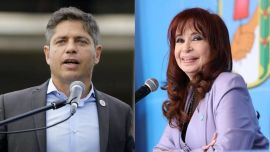
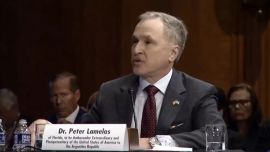
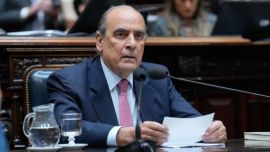
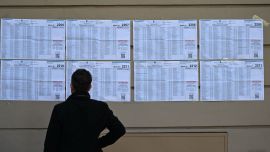





Comments